
His Majesty's Treasury, occasionally referred to as the Exchequer, or more informally the Treasury, is a department of His Majesty's Government responsible for developing and executing the government's public finance policy and economic policy. The Treasury maintains the Online System for Central Accounting and Reporting (OSCAR), the replacement for the Combined Online Information System (COINS), which itemises departmental spending under thousands of category headings, and from which the Whole of Government Accounts (WGA) annual financial statements are produced.
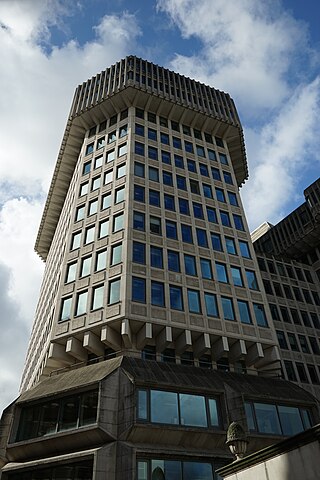
The Government Legal Department is the largest in-house legal organisation in the United Kingdom's Government Legal Profession.
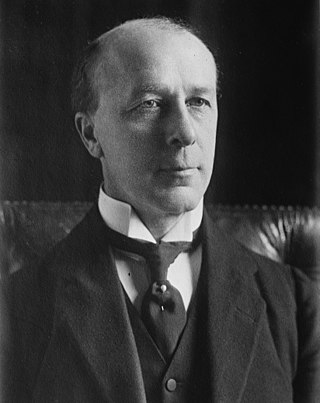
Reginald McKenna was a British banker and Liberal politician. His first Cabinet post under Henry Campbell-Bannerman was as President of the Board of Education, after which he served as First Lord of the Admiralty. His most important roles were as Home Secretary and Chancellor of the Exchequer during the premiership of H. H. Asquith. He was studious and meticulous, noted for his attention to detail, but also for being bureaucratic and partisan.
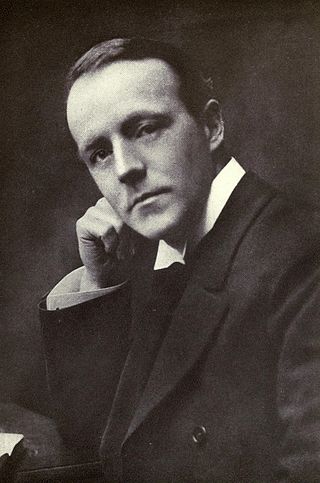
Walter Runciman, 1st Viscount Runciman of Doxford, was a prominent Liberal and later National Liberal politician in the United Kingdom. His 1938 diplomatic mission to Czechoslovakia was key to the enactment of the British policy of appeasement of Nazi Germany preceding the Second World War.
In the United Kingdom there are at least six Lords Commissioners of His Majesty's Treasury, serving as a commission for the ancient office of Treasurer of the Exchequer. The board consists of the First Lord of the Treasury, the Second Lord of the Treasury, and four or more junior lords acting as whips in the House of Commons to whom this title is usually applied.
Sir Sydney John Chapman KCB CBE was an English economist and civil servant. He was Chief Economic Adviser to HM Government from 1927 to 1932.
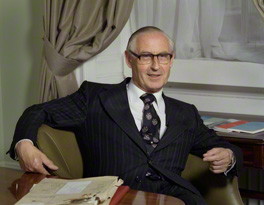
Douglas Albert Vivian Allen, Baron Croham was a British politician and civil servant.

Sir George Herbert Murray was a British civil servant.
John Bradbury, 3rd Baron Bradbury was a British peer, the third Baron Bradbury. He was a member of the House of Lords from 1994 to 1999.
John Patrick Carswell CB FRSL was an English civil servant and author who served as Secretary of the British Academy from 1978 to 1983. Professionally and as an author, he was known as J. P. Carswell, although he published some of his books under the name John Carswell.
Sir Frederick John Atkinson, was a British civil servant.
The Office of the Parliamentary Counsel (OPC) drafts all government bills introduced to the Parliament of the United Kingdom. Established in 1869, OPC is part of the Cabinet Office and led by Elizabeth Gardiner, the First Parliamentary Counsel and Permanent Secretary.

James Meyer Sassoon, Baron Sassoon, is a British businessman and politician. After a career in the financial sector he served in various roles in HM Treasury, the UK's finance ministry, from 2002 to 2008, at which point he began advising David Cameron on financial issues. From May 2010 to January 2013, Sassoon was the first Commercial Secretary to the Treasury and was appointed to the House of Lords as a Conservative. In January 2013, he became an executive director of Jardine Matheson Holdings and of Matheson & Co. He is also a director of Hongkong Land, Dairy Farm and Mandarin Oriental and chairman of the China-Britain Business Council.
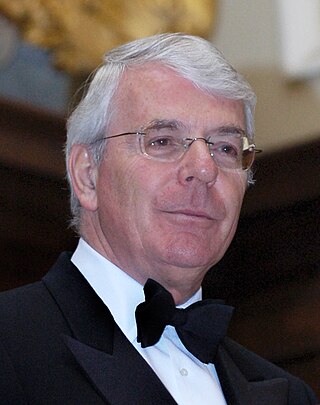
The 1992 Dissolution Honours List was gazetted on 5 June 1992 following the advice of the Prime Minister, John Major.

Sir John Edward Astley Troup is a British tax lawyer, and was a civil servant at HM Treasury and then HM Revenue & Customs. He spent two periods as a tax partner at the law firm Simmons & Simmons, from 1985 to 1995 and from 1997 to 2004, and was a special adviser to Kenneth Clarke as Chancellor of the Exchequer in 1995-97.
The Legal Adviser to the Home Office is a senior government lawyer and the chief legal adviser to the Home Office. The office was formally established in 1933, but older offices with similar functions date back to the early nineteenth century.

The Shelton Oak, also known as Owen Glendwr's Observatory or the Glendower Oak, was a veteran oak tree near Shrewsbury, England. It may be the "grette Oak at Shelton" mentioned in a document from the time of Henry III (1216–1272). The oak is said to have been climbed by Owain Glyndŵr to view the 1403 Battle of Shrewsbury, from which its alternative name derives. In later years the tree became renowned for its hollow trunk which was variously described as able to accommodate twenty people, six people sitting for dinner or an eight-person quadrille dance. The tree had fallen by 1940 and its remains were removed in the 1950s to facilitate improvements to an adjacent road junction.
Sir Eric St John Bamford, KCB, KBE, CMG was an English civil servant.
Sir Bernard William Gilbert, GCB, KBE was a British civil servant who served as Joint Secretary in HM Treasury from 1944 to 1956.









